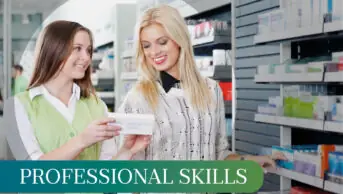As part of the ‘clinical pharmacists in general practice’ pilot, we are required to attend various Centre for Pharmacy Postgraduate Education (CPPE) study days. Most recently I attended the pharmacist update course, which focused on priorities for community pharmacy and primary care.
A GP-pharmacist duo delivered a fantastic, fast-paced and informative programme. They covered long-term conditions, self-care and public health issues. I came away with relevant actions and ideas I could implement in my practice for safer prescribing — for example, performing a search to review use of high dose non-steroidal anti-inflammatory drugs in patients with heart disease.
Team working
At the surgery, I use our weekly clinicians meeting as an opportunity to discuss various pharmacy-related issues such as cost-effective prescribing, implementing local prescribing formularies and issues highlighted by the clinical commissioning group. I also highlight relevant Drug Tariff changes and make the clinicians aware of newly licensed products, including any over-the-counter products.
We also discuss recent Medicines and Healthcare products Regulatory Agency (MHRA) guidance and other relevant prescribing news stories. Where necessary, I implement the recommendations after discussing with the prescriber. I was a bit worried about speaking in front of the team for the first time but I was pleased I finally got the opportunity to showcase some of the things I am capable of. Following the first meeting, I received good feedback and started to receive queries from the prescribers directly.
Building bridges with community pharmacy
One thing I do not want is to create a divide with community pharmacists in the local area. I am keen to make sure that the surgery and pharmacies work together to make systems operate consistently and at their best to improve patient care and safety further.
Opening channels of communication was easy — I visited our local pharmacy and introduced myself to our other local pharmacists by telephone. I found out what pharmacy services they offer, explained my role and asked about how we could work together. It is clear that I will be playing a different role and I am delighted to know I have their support if required. The pharmacists closest to our surgery are both independent prescribers and they have a good relationship with the surgery and each other.
Learning sets
As part of the pilot, our CPPE education supervisor and clinical mentor deliver 14 learning sets over the 18-month pathway. They are an opportunity to reflect on professional practice, discuss individual cases in depth, identify solutions to problems and improve our practice and patient care.
Assessments
Recently I sat my calculations exam for the non-medical prescribing (NMP) course. The pass mark was 100% and this brought back the memory and stress of my registration calculation assessment. However, I managed to pass.
It is becoming real now, with tests and deadlines looming. I have changed my scope of practice since starting the course and so the biggest hurdle is making sure I get enough shadowing opportunities for my log of evidence.
Looking forward
I would like to start patient consultations soon, perhaps by running clinics or performing clinical reviews. Currently, I am shadowing asthma clinics with the intention to conduct them myself.
It is tricky juggling work at the surgery, the NMP element and the CPPE training but the learning opportunities are endless.
You may also be interested in
The importance of diverse clinical imagery within health education

Entrustable professional activities: a new approach to supervising trainee pharmacists on clinical placements
